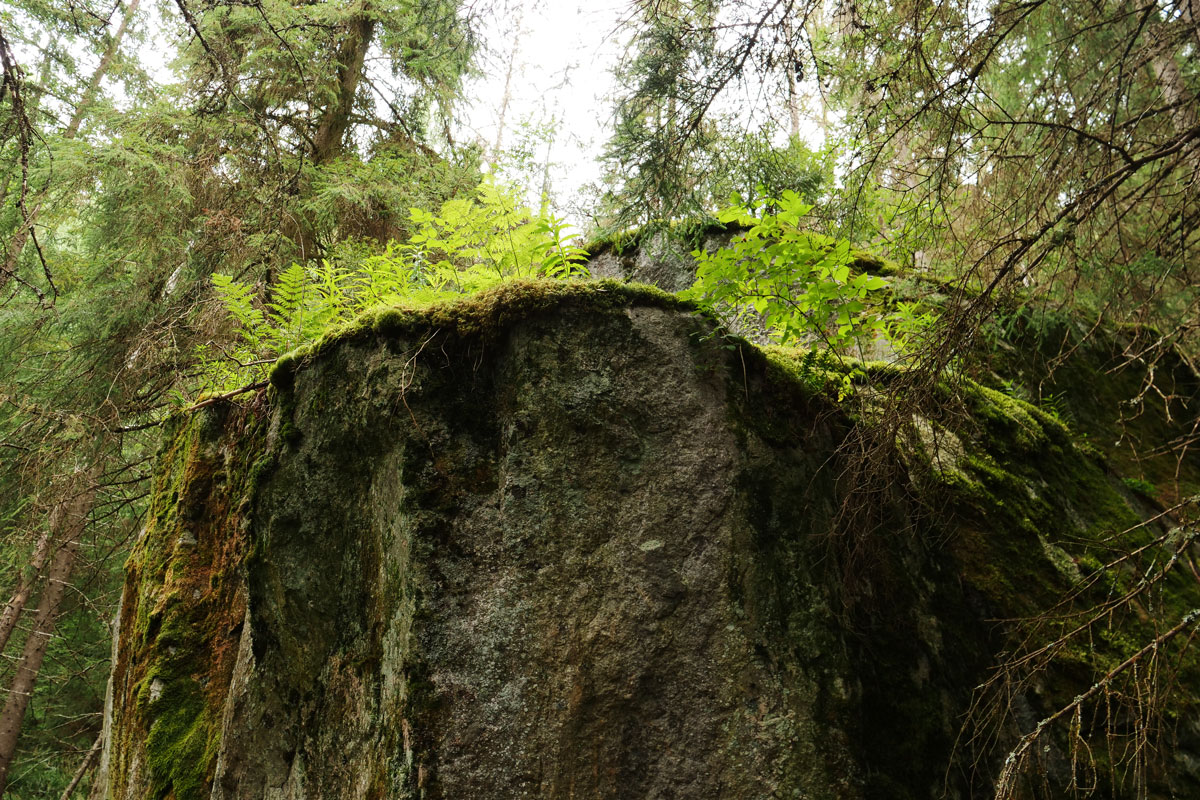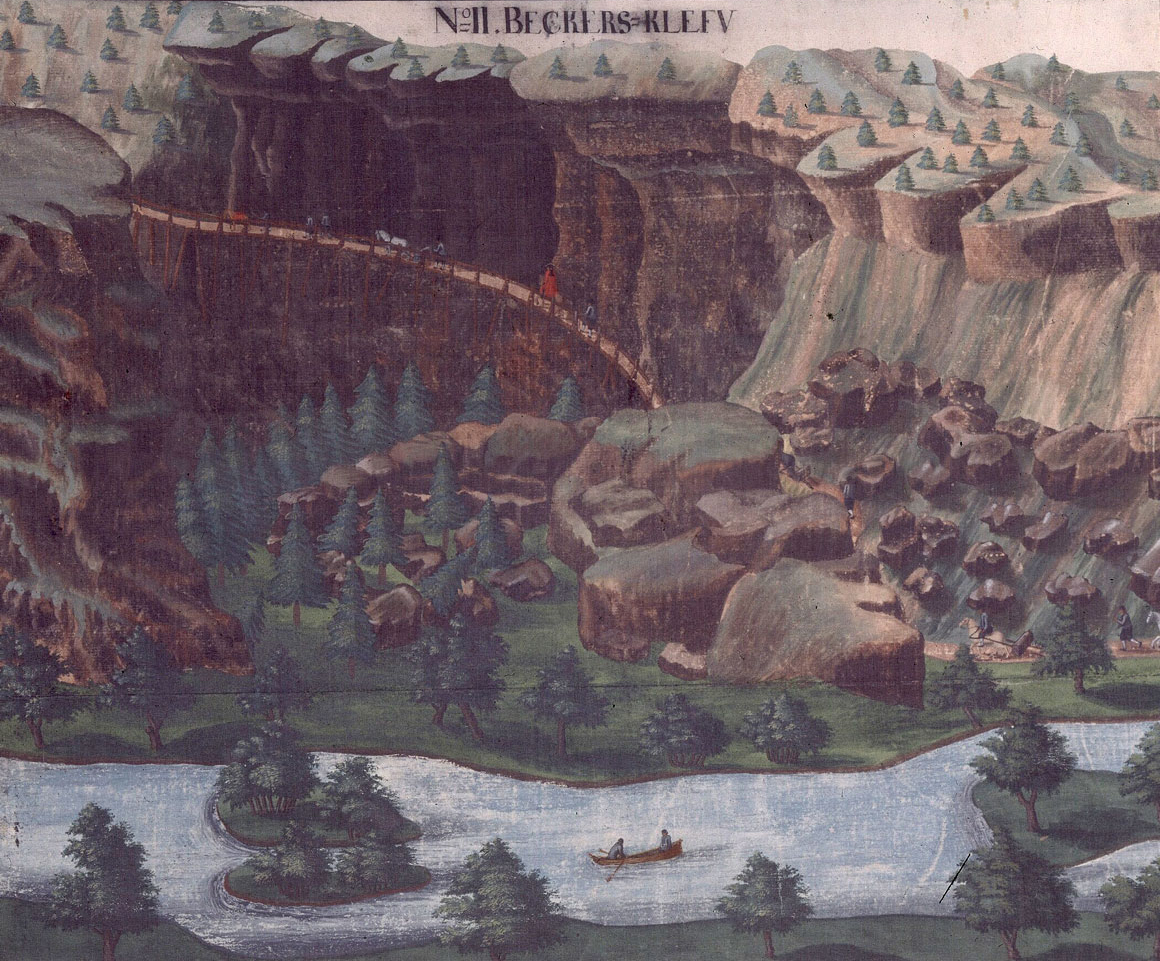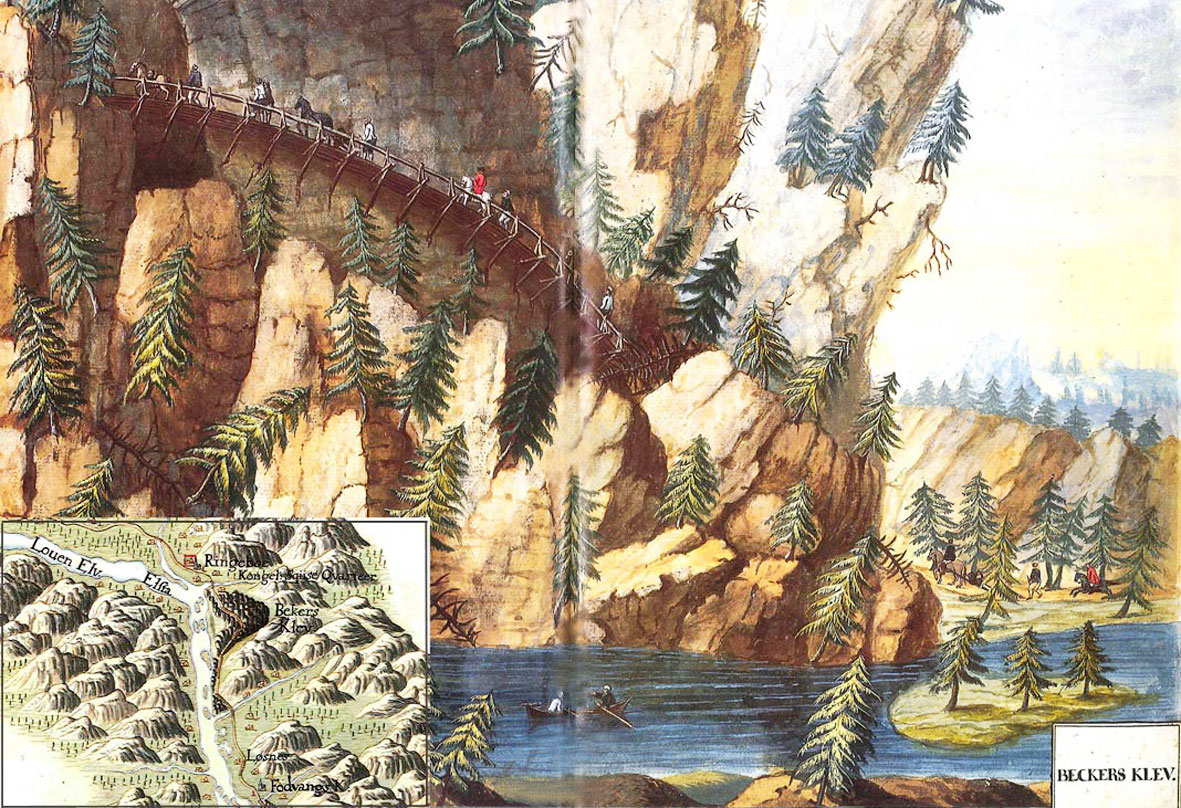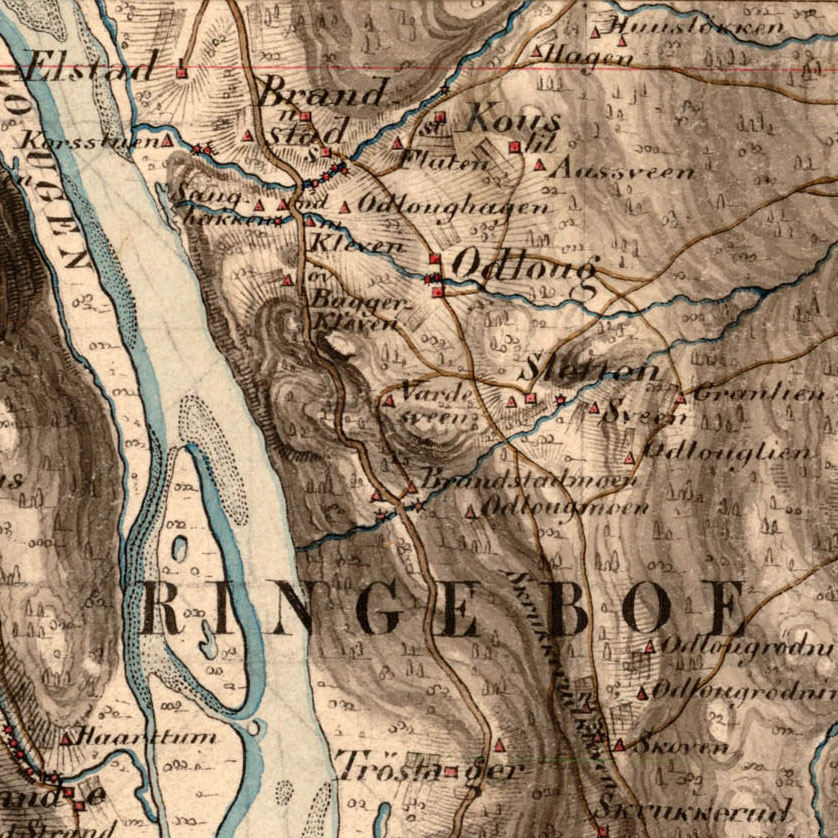The King’s Road across Høgkleiva – 300-year-old history
Take a stroll across Høgkleiva today, and you may meet pilgrims or groups of hikers. Today, the forest conceals most of what is actually a wide road made of gravel and sand. Supporting walls have been built where the terrain is at its steepest.
Some 300 years ago, this was an area bustling with activity as the road was being laid. It had been ordered by the king of the Dano–Norwegian Realm, and the work was carried out under the command of his Director-General of Roads. This was a huge construction project for its time, and one that was not made easier by the rough, precipitous terrain.
The steep rocky stretch south of Ringebu was notorious, and the story goes that when King Christian VI and his court travelled through in a four wheeled carriage in 1733, the queen and her mother had to be carried up Elstadkleiva in a sedan chair. They found the road too scary to remain in the carriage.
The route across Høgkleiva was the first drivable road built through Ringebu. It was known as “Trondhiemske kongevei”, and connected the villages in Gudbrandsdalen with Christiania in the south and Trondheim in the north. Along the way you would meet farmers with horse and cart as well as carioles and four-wheeled carriages carrying government officials and the clergy. Smallholders, tenant farmers, and the poor came by foot. It brought foreigners, soldiers, travellers, and other fortune seekers.
This old road reflects the development in Norway during the 1600s and 1700s. It was a time of prosperity. The postal service was established in 1647, and the civil service was developed. A royal decree to upgrade the main routes was issued, and the aim was to make the network suitable for horse and cart. This was largely motivated by the king’s own travel requirements. Throughout the 1700s, the roads were improved to accommodate larger carriages and more traffic.
The different sections of the stretch between Fåvang and Ringebu Stave Church are known as Elstadkleiva and Høgkleiva, with the latter referring to the highest point. A “kleiv” is a steep rocky ascent or path. Many heaved a sigh of relief when the new main road by Lågen was built around 1860.

Høgkleiva is a stop along the way.
Take a break after the climb.



